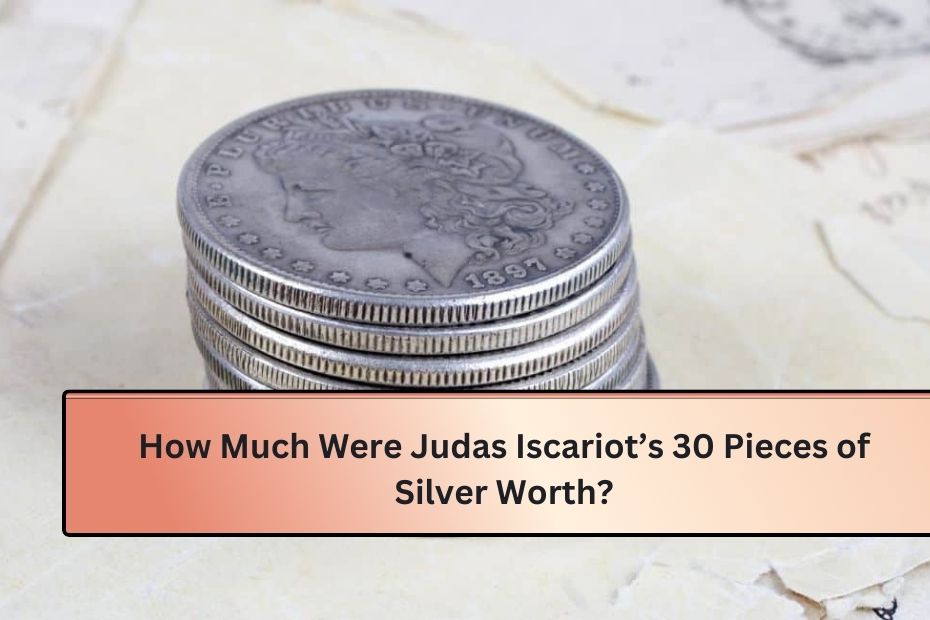Judas Iscariot’s betrayal of Jesus for 30 pieces of silver is one of the most infamous events in history. It is so well-known that “30 pieces of silver” has become a symbol of betrayal in many cultures. But have you ever wondered what those 30 pieces of silver were actually worth? Scholars have debated this for years. In this article, we will explore the story behind the 30 pieces of silver and attempt to understand their value.
The Biblical Account of Judas’s Betrayal
The story of Judas Iscariot’s betrayal is found in the book of Matthew, chapters 26 and 27. Before the Last Supper, Judas, one of Jesus’s disciples, approached the chief priests with an offer to betray Jesus. He asked, “What are you willing to give me if I deliver him over to you?” The priests agreed to give him 30 pieces of silver. Later, after feeling guilty for his actions, Judas threw the coins back at the priests in the Temple and took his own life. The priests, deciding that the money was “blood money,” used it to buy a place called the Potter’s Field.
What Were the 30 Pieces of Silver?
The original Greek word used in the Gospel of Matthew is argyria, meaning “silver coins.” This doesn’t specify what type of coin it was, but scholars have considered several possibilities. During 33 A.D., different silver coins were in circulation in Jerusalem. These included:
- Tyrian Shekels (Tetradrachms of Tyre)
- Tetradrachms of Antioch
- Ptolemaic Tetradrachms
- Roman Denarii
Among these, Tyrian Shekels were most likely to have been the coins in question because they had the highest silver content—about 94%. They were also the coins the priests accepted for paying the temple tax. Each Tyrian shekel contained about 14 grams of silver.
How Much Would 30 Pieces of Silver Be Worth Today?
Using today’s silver price, which is around $0.63 per gram, the value of 30 Tyrian shekels, containing 14 grams of silver each, would amount to $264.60. However, these coins would have been seen as common currency back then, and the real value at the time would be more meaningful when considering the cost of living and wages in 33 A.D.
Historical Value vs. Modern Value
While $264.60 seems like a low amount today, it’s important to remember that money worked differently in ancient times. Back in the Roman era, wages were much lower, and goods were significantly cheaper. The 30 pieces of silver may not translate directly to modern currency, but it held enough value to be considered worth a betrayal in Judas’s case.
The Symbolism of 30 Pieces of Silver in the Bible
The number 30 is not just a random figure in the Bible. It’s believed to have symbolic meaning. In Exodus 21:32, 30 pieces of silver is the compensation paid if a slave is killed. This is a direct reference to Jewish law, and it connects with Judas’s betrayal, suggesting that the priests valued Jesus at the price of a slave.
The prophet Zechariah also referenced 30 pieces of silver in Zechariah 11, where it symbolized the insultingly low payment for a prophet’s work. Judas’s betrayal, therefore, is seen as an extension of this insult. The priests undervalued Jesus and the mission he came to accomplish, reflecting their anger at him for challenging the corruption within the temple.
Types of Silver Coins in Circulation (33 A.D.)
| Coin Type | Silver Content (%) | Common Usage |
|---|---|---|
| Tyrian Shekel | 94% | Temple Tax, Market Trading |
| Tetradrachm of Antioch | ~90% | Market Trading, Taxation |
| Ptolemaic Tetradrachm | ~85% | General Commerce |
| Roman Denarii | ~80% | Daily Transactions, Roman Empire |
Table 2: Comparison of 30 Pieces of Silver (Modern vs. Historical Value)
| Value Type | Estimated Worth |
|---|---|
| Modern Silver Value (2024) | $264.60 |
| Historical Value (33 A.D.) | Price of a Slave |
Conclusion
Judas Iscariot’s 30 pieces of silver symbolize much more than just money. It reflects the betrayal of a man who was regarded as worthless by those in power. While we can calculate the value of silver today, it’s more important to understand the deeper meaning behind the story. The 30 pieces of silver represent the devaluation of Jesus’s mission and the rejection of his teachings.
FAQ’s
Why did Judas betray Jesus for only 30 pieces of silver?
Judas’s motives remain debated, but the 30 pieces of silver reflected the symbolic value of a slave’s worth in biblical terms.
What kind of coins were the 30 pieces of silver?
The coins were likely Tyrian shekels, known for their high silver content and use in temple tax payments.
How much would Judas’s 30 pieces of silver be worth today?
At today’s silver price, the silver in those coins would be worth around $264.60.
What is the significance of 30 pieces of silver in the Bible?
It symbolized the low value placed on Jesus by the priests, equivalent to the price of a slave in biblical law.
What happened to the 30 pieces of silver after Judas returned them?
The priests used the money to buy the Potter’s Field, as they considered it blood money and unfit for the temple treasury.

